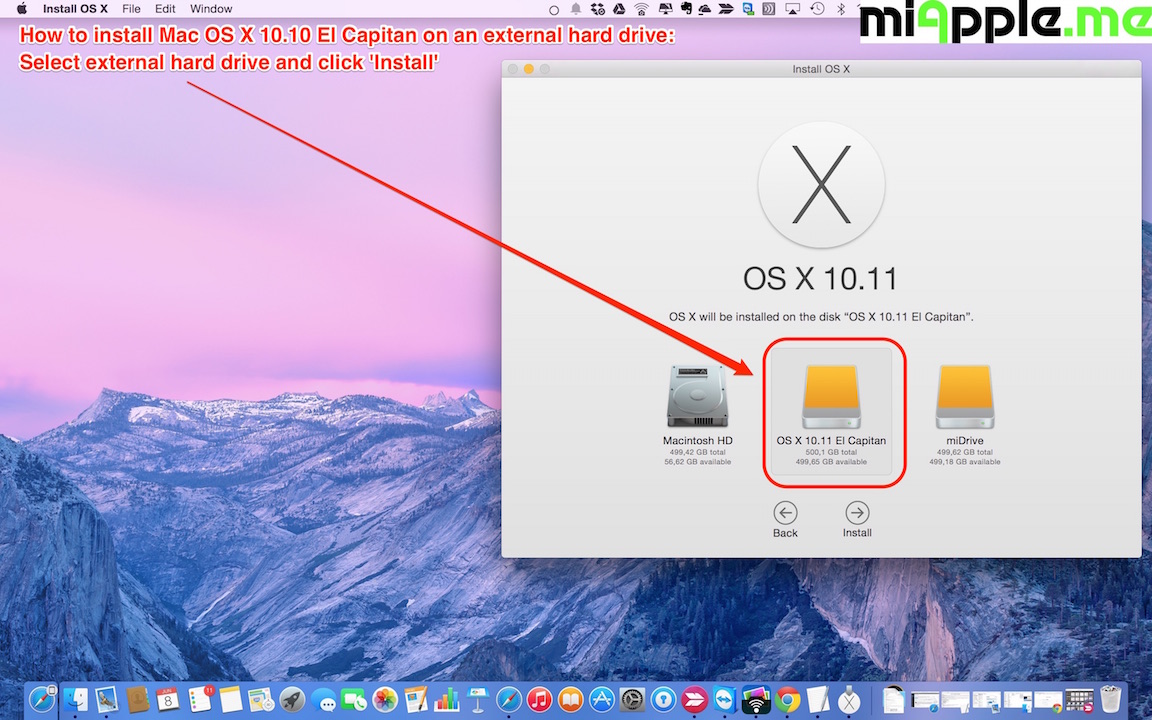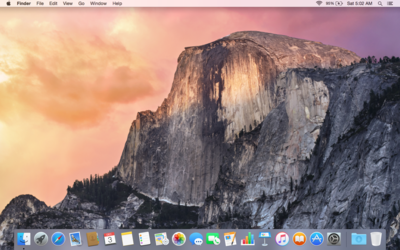- El Capitan Date Install Pc
- El Capitan Date Install Free
- El Capitan Date Install Windows 7
- El Capitan Date Install Linux
To get the latest features and maintain the security, stability, compatibility, and performance of your Mac, it's important to keep your software up to date. Apple recommends that you always use the latest macOS that is compatible with your Mac.
Install el capitan from usb drive Driver File Name: install-el-capitan-from-usb-drive.exe Driver Upload Date: 16 December 2020 Last Driver Version.
- Jan 03, 2016 El Capitan disk has an embbed security certificate that has expired in 2016. Just change your system date, let's say to, install El Capitan, then change the date back to today. MacBook Pro 15' Unibody Mid 2009.
- If you looking on the internet a Mac OS X El Capitan 10.11.1 DMG Without app store So, you come to the right place now a day hares with you an El Capitan download dmg file OS upgrade is highly recommended is the latest release from OS X. It has been designed to improve the performance and usability of OS X Apple Inc.
- As per this suggestion, I reset my system date via terminal during recovery mode to 1 Aug 2014. This enabled downloading El Capitan for me ( I was only getting option to download Yosemite before resetting the date), and I continued with re-installation wizard.
- El Capitan Bootable Installer (El Capitan DMG) Now that you have the El Capitan “.app” file, you can use it to update OS X on multiple Macs. If you’re looking for a fresh installation, you need to create the bootable installer for El Capitan. One way to do so is from the El Capitan DMG (InstallESD.dmg) file.
Learn how to upgrade to macOS Big Sur, the latest version of macOS.
Check compatibility
The version of macOS that came with your Mac is the earliest version it can use. For example, if your Mac came with macOS Big Sur, it will not accept installation of macOS Catalina or earlier.
If a macOS can't be used on your Mac, the App Store or installer will let you know. For example, it might say that it's not compatible with this device or is too old to be opened on this version of macOS. To confirm compatibility before downloading, check the minimum hardware requirements:
El Capitan Date Install Pc
- macOS Catalina 10.15 hardware requirements
- macOS Mojave 10.14 hardware requirements
- macOS High Sierra 10.13 hardware requirements
- macOS Sierra 10.12 hardware requirements
- OS X El Capitan 10.11 hardware requirements
- OS X Yosemite 10.10 hardware requirements
Download macOS using Safari on your Mac
Safari uses these links to find the old installers in the App Store. After downloading from the App Store, the installer opens automatically.
- macOS Catalina 10.15 can upgrade Mojave, High Sierra, Sierra, El Capitan, Yosemite, Mavericks
- macOS Mojave 10.14 can upgrade High Sierra, Sierra, El Capitan, Yosemite, Mavericks, Mountain Lion
- macOS High Sierra 10.13 can upgrade Sierra, El Capitan, Yosemite, Mavericks, Mountain Lion
Safari downloads the following older installers as a disk image named InstallOS.dmg or InstallMacOSX.dmg. Open the disk image, then open the .pkg installer inside the disk image. It installs an app named Install [Version Name]. Open that app from your Applications folder to begin installing the operating system.
- macOS Sierra 10.12 can upgrade El Capitan, Yosemite, Mavericks, Mountain Lion, or Lion
- OS X El Capitan 10.11 can upgrade Yosemite, Mavericks, Mountain Lion, Lion, or Snow Leopard
- OS X Yosemite 10.10can upgrade Mavericks, Mountain Lion, Lion, or Snow Leopard
- No packages were eligible for install. This is what it looks like in the installer. Upon seeing this I went 'HUH?' Because the installation was from a thumb drive I'd used many times to install Mac OS X (El Capitan) successfully. The above image came from an attempt to install El Capitan. I just got the following message.
- Nov 12, 2019 I was repeatedly getting 'Could Not Be Installed on your computer no packages were eligible for install' using both the internet el capitan install and this USB install. Thank you MIKX using terminal date just got me going!!
- Oct 01, 2015 This entry was posted in Troubleshooting and tagged 10.11, El Capitan, OS X, OS X 10.11 on October 1, 2015 by Topher Kessler. Post navigation ← Reasons to both install and avoid OS X 10.11 El Capitan Fix package managers not working after installing El Capitan →.

El capitan no packages were eligible for install. Posted by 22 days ago. El capitan no packages were eligible for install. Im in recovery mode and i keep getting the same popup despite going to terminal and typing 'date ' which failed then 'date ' which also failed.
; Date: 2016-10-16 15:41Tags: Mac OS X
A key step for upgrading the disk on a MacBook Pro is to install a new operating system on the new drive, and then use Migration Assistant to copy over the old data. Depending on how you went about the work, installing Mac OS X on the new system may give you a message: OS X could not be installed on your computer. No packages were eligible for install.
This is what it looks like in the installer. Upon seeing this I went 'HUH?' because the installation was from a thumb drive I'd used many times to install Mac OS X (El Capitan) successfully.
The above image came from an attempt to install El Capitan. I just got the following message, macOS could not be installed on your computer, while trying to install macOS High Sierra.
In both cases there was the same cause. In the El Capitan case, as I say in the next paragraph, the hardware clock had reset to zero because it did not have a battery pack. In the High Sierra case, I had performed a hardware reset of the computer in an attempt to fix a bootup problem. I had found advice to disconnect the battery, the power supply, then hold down the power key for a few moments. In both cases the hardware clock had been reset to zero, and macOS refused to boot.
After some yahoogling (duckduckgoing) I came across a simple solution. This particular computer had been running with no battery, and therefore the hardware clock was reset to zero, and Mac OS X had a test against that condition.

We've discussed elsewhere the process to install Mac OS X onto a computer, and transfer information from an old drive. It's during that process when the above message appears. A couple steps prior is where you can take action to correct the problem.
At this step, click on Terminal ..
Then change the operating system date.
When running this particular Terminal session, you are ROOT meaning you can change anything on the computer. Normally we type 'date' at the command line just to find out the current day/month/year/time. But, the date command can be used to change the time registered in the system clock.
As I said above, for this particular computer the system clock had been reset to zero because the battery pack had been changed. In fact, the computer had run without a battery for many months because the old battery had gone bad.

As you see on the screen, the date had been January 1, 2001. I then changed the system date to the current time as of the writing of this posting.
To understand the second command, go to a terminal window and type 'man date'.
In the synopsis section you'll see this as an option for the 'date' command:
No Packages Were Eligible For Install Mac El Capitan Dock
That's a little obtuse, but further down the manpage is this key: Error failed building wheel for mysqlclient macos.
In other words, the date code for this purpose is month-day-hour-minutes-year .. hence, that's what I entered and it changed the system date to match.
El Capitan Date Install Free
No Packages Were Eligible For Install Mac El Capitan
No Packages Were Eligible For Install Os X El Capitan

Afterward I closed the Terminal window and was able to successfully install Mac OS X on the computer.